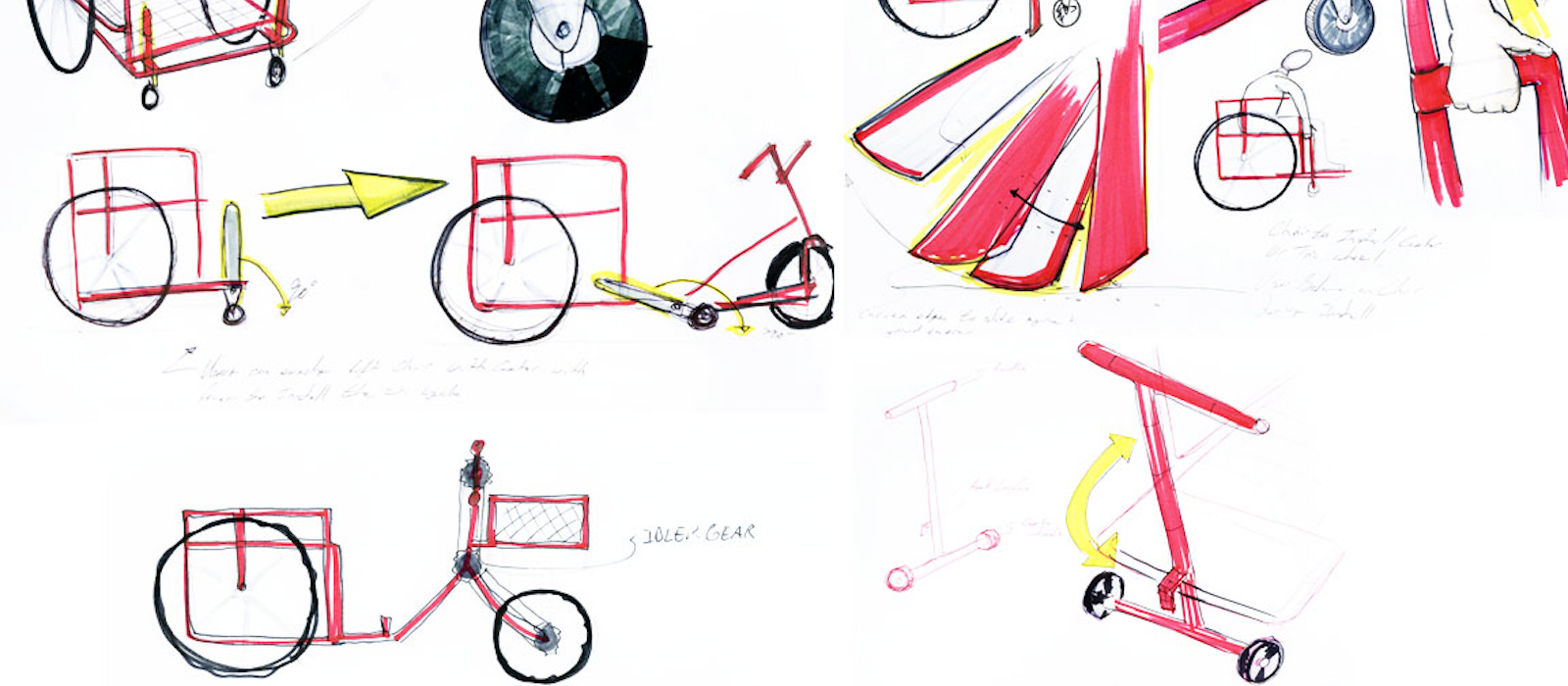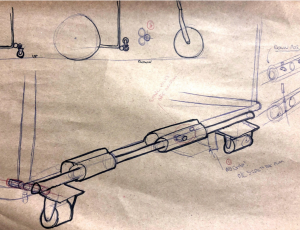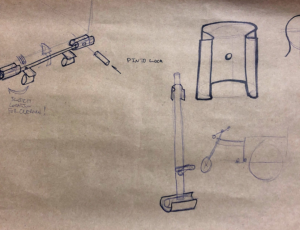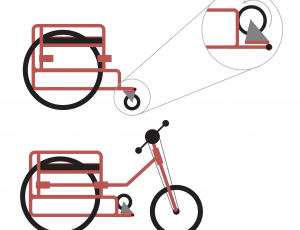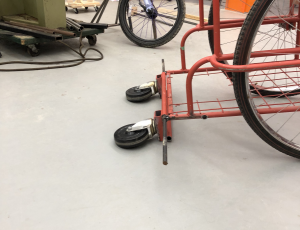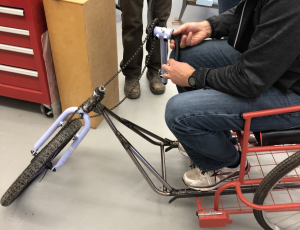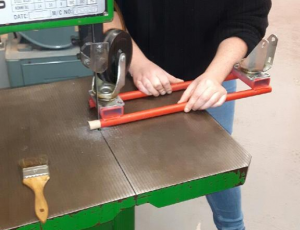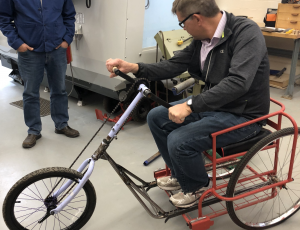The later prototypes, 3 and 4, were primarily focused on making the two-in-one wheelchair/tricycle as user-friendly as possible.
Undergraduate students Samantha Astles and Jakob Robinson-Hoffmann worked in coordination with in-house technicians in Carleton’s School of Industrial Design and with the artisans and community of people with disabilities in Uganda to develop Prototype 3.
The aims of Prototype 3 were to make the transition from wheelchair to tricycle and vice-versa as simple and seamless as possible. Reducing the amount of effort to make this transition makes the device ultimately more accessible.
To do this, Samantha aimed to simplify the design of Prototype 2. In Prototype 2, the front casters connected to the wheelchair at two points. This meant that the user had to have these two points perfectly aligned in order to attach the casters to use the device as a wheelchair, which was difficult to do if the user wanted to remain seated in the wheelchair. In order to simplify this process, Prototype 3 created a casters attachment that only needed one attachment point in the middle.
Prototype 3 also worked to test different positions for the lever that would allow the user to raise the front end of the wheelchair, taking the pressure off the front wheels so that they could easily be changed out.
Ultimately Prototype 3 focused on developing the ideation of this project with the needs of the end-user in mind.
